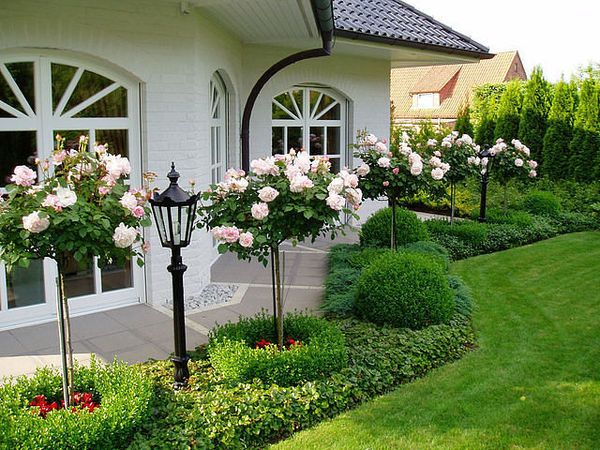
Choosing the right shaped tree for its surroundings is an important part of landscape design. While it’s possible to trim trees to the shape of your liking, all trees have a natural shape that they tend to adhere to. It’s easier to work with a tree’s natural shape than to try and make it conform to your ideal, which makes choosing the properly shaped tree for the situation an integral part of landscaping skill. In this post, we’ll go over the top tree shapes to consider for landscaping.
Columnar Shaped Trees
As the name suggests, columnar trees are tall and narrow with branches that grow more up or down rather than outwards. Their shape suggests the columns of a building and is often used to create cover. The thin profile uses up small amounts of ground space while having the ability to reach high into the sky. Species of columnar trees include Lombardy poplar, Italian cypress and columnar apple or peach.
Pyramidal Shaped Trees
The pyramidal tree shape is the shape of the classic Christmas tree. Thin and pointy at the top and incrementally widening as you get closer to the base. Pyramidal trees have a singular trunk with branches reaching outward. Many evergreen trees have a pyramidal shape including the Douglas fir, blue spruce and Lodgepole pine.
Weeping Shaped Trees
Weeping shaped trees are characterized by long, bendable branches that reach upward before arching over and hanging toward the ground. This can create a canopy effect with a large patch of ground underneath the tree obscured and surrounded by hanging branches. This makes them more suitable as a place for resting or sitting rather than being grown in areas populated by sidewalks, footpaths or streets. The weeping willow is a classic example of a weeping shaped tree. Other types of weeping shaped trees include the weeping cherry, weeping larch and weeping beech.
Round Shaped Trees
Again, as the name suggests, round shaped trees appear in a round or oval shape. They typically have a main tree trunk off which branches grow in equidistant directions to create a thick, round or oval shaped crown. Round and oval shaped trees are often used for their ability to create shade. Examples of round shaped trees are the red and sugar maple, white ash and red oak.
